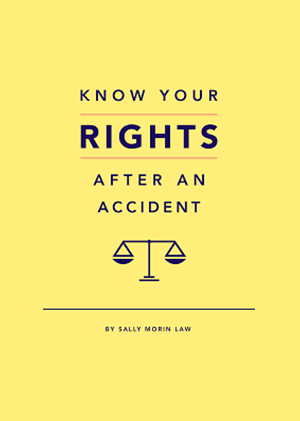Even though I settled my personal injury case years ago, can I get more money for my injuries?
One thing that can sadly come up well after someone settles their personal injury case is that they realize their injury is more serious, long-term or even permanent than the previously believed it to be when they settled their case. Typically you, with the assistance of an experienced personal injury traffic accident attorney, will not settle your case unless and until your injuries have fully resolved themselves or at least stabilized to the point that you are what is called “medically stationary” (nothing further can be done medically to improve your injuries – only time will tell what the ultimate outcome and recovery will be.) Read here for more information on how to decide when to resolve your personal injury case when you may need more medical treatment.
However, as we age and/or experience other injuries or illnesses, those older injuries that we once thought were resolved may “flare up” or come back completely. Many of us are familiar with this occurring with old sports injuries that we thought were gone, but then continue to haunt us through the years as we age. This is one of the risks you face when you are injured in a pedestrian, bicycle, motorcycle or auto accident. That is why you want to be as sure as possible, with your medical team on board for you to be fully released from care, that your injuries have resolved. If your doctors are not 100% convinced that your injuries have or will fully heal, you and your injury attorney should request written documentation from the doctor(s) stating what their future prognosis for your injuries is. That this information can be presented to the 3rd party insurance carrier in your personal injury case to make a claim for future damages.
In all personal injury cases (regardless of whether or not you are represented by a personal injury lawyer) you will be required to sign a settlement release which bars you from further financial recovery from the 3rd party’s insurance company or the third party personally. That is the purpose of a settlement release – to receive compensation for release of any further obligation in the case.
Signing this release does not however bar you from receiving coverage from your own medical insurance in the future. This means that your medical insurance provider cannot try to seek reimbursement from you or the person who caused your injuries for any medical treatment you receive after the case settles related to those injuries. So, a “safety net” you have is your own health insurance in the event your injuries reappear well after you have settled your injury case. Note that this net will only cover your actual medical expenses. It will not provide any further compensation for pain and suffering or any additional loss of earnings or other non-medical damages that you suffer as a result of the injury coming back.
Keep in mind that once you sign a settlement release or receive a judgment at trial (even if you do so when you think you have fully recovered or will fully recover) you cannot go back and seek further compensation for that old personal injury case.
For more on this, you may want to check back with the personal injury lawyer who handled your case, but it is very likely you and your attorney believed the settlement to be the most reasonable outcome at the time.










